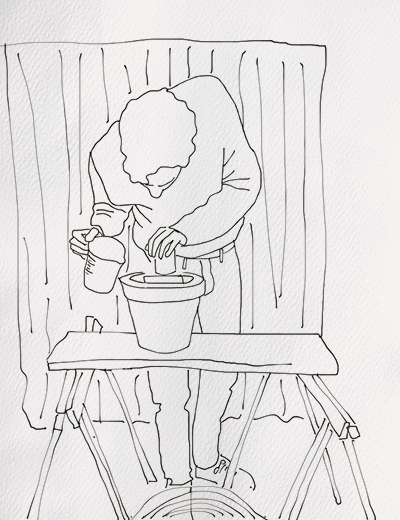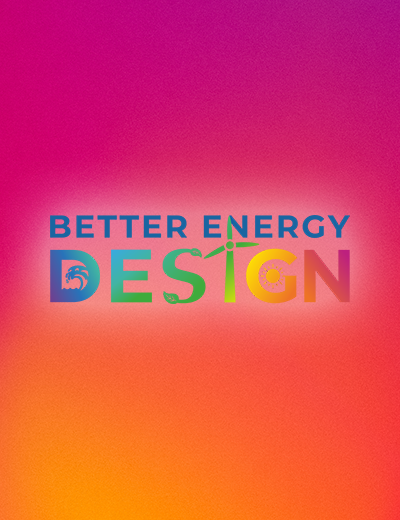BETTER ENERGY BY DESIGN is an international student competition, held by BE OPEN in 2022/2023. It was open to students, graduates and young professionals who specialise in the fields of art, design, architecture and media.
The competition aimed to encourage creation of innovative solutions by younger creatives, for the more prosperous and sustainable future. The focus of the competition was the United Nations’ SDG#7: Affordable and Clean Energy.
In 2015, the UN General Assembly adopted the 2030 Agenda for Sustainable Development and its Sustainable Development Goals (SDGs), which include a dedicated and stand-alone goal on energy, SDG#7, calling to “ensure access to affordable, reliable, sustainable and modern energy for all”.
Energy lies at the heart of both the 2030 Agenda for Sustainable Development and the Paris Agreement on Climate Change. Ensuring access to affordable, reliable, sustainable and modern energy for all will open a new world of opportunities for billions of people through new economic opportunities and jobs, empowered women, children and youth, better education and health, more sustainable, equitable and inclusive communities, and greater protections from, and resilience to, climate change.
To attain the UN SDGs we need to think out of box the goals. We need creative thinking – design thinking – and creative action. Design has a crucial role to play as an instrument or vehicle for the implementation of the UN SDGs.
BE OPEN and all of the stakeholders involved in this international competition programme, strongly believe that creativity is integral in the shift to sustainable existence.
The objectives of “Better Energy by Design” were to raise awareness about SDG#7: Clean and Affordable Energy and contribute to achieving it via recognizing, showcasing and promoting the best design ideas and projects that embody and can advance the principles, aims and implementation of United Nations’ Sustainable Development Goals.
Achievement of SDG#7 is impossible without ensuring that a growing number of households, communities and production companies use green energy technologies. Therefore participants of “Better Energy by Design” are asked to reflect on “What can be done to prompt breakthrough of clean energy technologies into our lives?”
Projects for the Competition had to relate to one of the following submission categories:
1. Powered by Renewables: development and use of renewable energy can improve the energy security and significantly help the environment, and yet the share of these technologies is very small in our everyday life. Competition participants are offered to share their ideas on how renewables could be integrated in city or rural landscapes and become “new normal” for more people
2. Save More Energy: most people never think about how much energy they waste when they have too many unused devices connected to an electricity grid or when they don’t switch their computers off leaving the office. In this category competition participants are welcomed to submit projects related to energy efficiency and reduction of energy loss whether at individual, community or industrial levels
3. Reducing Energy Gap: for most of us electricity is something common and taken for granted but there are still many places in the world where people lack access to electricity or clean cooking systems. This global challenge calls for immediate action and competition participants are invited to step in and propose potential solutions for less electrified communities
The First prize of €5,000 went to Miguel Acebron, a young architect from the University of Navarra in Spain, for the prototype of BOTIJO: a fridge that works with water and wind, a new take on a traditional Spanish porous clay vessel used to cool water. Miguel’s prototype allows cooling the contents of the Botijo below 5ºC by boosting the drying of the outer surface with an air flow. The BOTIJO is the first passive fridge that preserves medicines and fresh food in stable thermal conditions.
The Second prize of €3,000 was awarded to Qin Zhou from School of Design, Zhejiang Sci-tech University, China, for Engershe: Let Heartbeats Generate Electricity. The project researches the feasibility of transforming human kinetic energy into usable electric energy by using the piezoelectric effect of 2D material nanofibers such as MoS2 in clothing.
The Third prize of €2,000 wentr to Naama Nicotra, an industrial designer and a recent BA in industrial design from the Holon Institute of Technology, Israel. Naama’s NakedPak is a concept series of “naked” food dishes wrapped in algae-based bioplastic that can be augmented with spices and cooked and eaten with its contents.
The Public Vote prize of €2,000 went to the team from Politecnico di Milano, Italy: Iwana Sampaio Raydan, Zhiben Zheng, Yanqianfang Sun, Mirjam Höchst, Lorenzo Longieri, and Ece Nur Temel for Brease, a modular system designed to be adapted to the facades of buildings. It creates a vertical garden that works as insulation and shading panel, helping households save energy.
The Founder’s Choice prize of €3,000 went to Kevin Sulca, an architect and graduate from Universidad Nacional de Ingeniería in Peru. His project Intergenerational Urban Furniture proposes a “versatile modular furniture that combines reading and play spaces with hydroponic gardening to generate economic and food sustenance in communities with a shortage of green area” so that different generations within a community could interact and learn from each other.
BE OPEN thanks and praises all the participants, jury members and voters!












